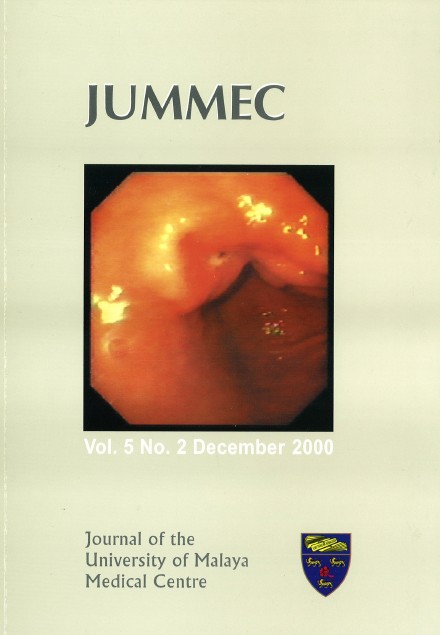Spectrum of Opportunistic Infections Related to the Central Nervous System Among AIDS Patients General Hospital Kuala Lumpur, 2001
Abstract
A retrospective study was conducted in Hospital Kuala Lumpur, May,
2001.49 (12.1%) of 406 AIDS patients were diagnosed as opportunistic infections related
to the central nervous system. The sex ratio (M:F) was 7.2. The median age was
34 years. The predominant age group for male as same as female was 25-34 years.The
majority of the study subjects were Chinese (79.6%), married (49%), unemployed (42.9%)
and heterosexuals (95.9%) as the risk behavior related to HlV infection. The most
frequent clinical manifestations was headache (71.4%). At the time of diagnosis, the
greater number of patients 39 (79.6%) had CD4 count < 200 celVcumm. Outcome of
acute therapy the patients had a complete (85.7%), treatment continued (10.3%), and
transfer to other hospital (2.00/0). Toxoplasmic encephalitis (7.6%) and cryptococcosis
(3.9%) were the frequent cause of focal intracerebral lesions and meningitis in these
patients respectively. Oral candidiasis (32.7%) was the most common among other
opportunistic infections in this study.
Downloads
Downloads
Published
Issue
Section
License
All authors agree that the article, if editorially accepted for publication, shall be licensed under the Creative Commons Attribution License 4.0 to allow others to freely access, copy and use research provided the author is correctly attributed, unless otherwise stated. All articles are available online without charge or other barriers to access. However, anyone wishing to reproduce large quantities of an article (250+) should inform the publisher. Any opinion expressed in the articles are those of the authors and do not reflect that of the University of Malaya, 50603 Kuala Lumpur, Malaysia.


